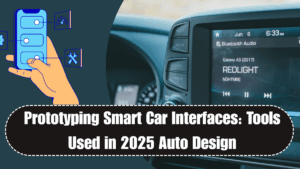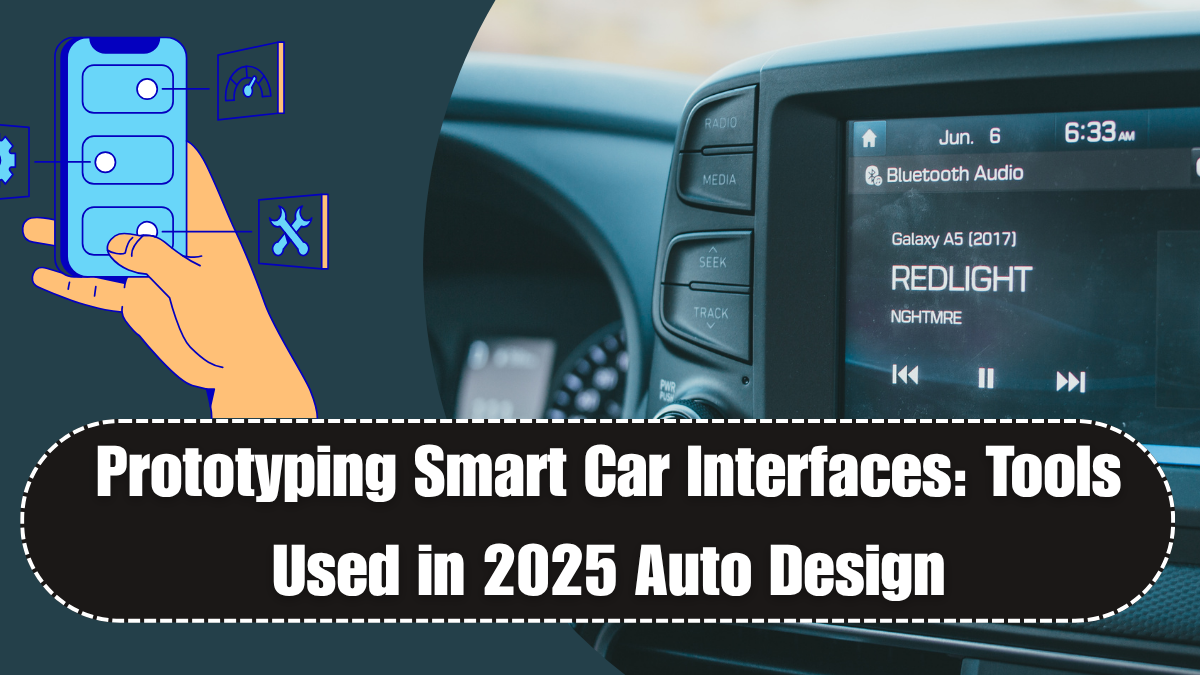The field of smart car UI prototyping has rapidly transformed in 2025, driving a new era of intuitive, tech-forward automotive experiences. As connected vehicles become more common, human-machine interface (HMI) design is now at the core of automotive innovation. Automakers and design labs are heavily investing in the creation of intelligent dashboards, touch-free controls, and AI-based personalization through precise UI/UX car tools.
From concept to implementation, smart car UI design now involves collaborative platforms, simulation software, and real-time prototyping environments. These systems ensure a seamless transition from sketches to interactive in-car experiences, helping designers respond faster to evolving user demands.

The Rise of Human-Machine Interface (HMI) Design in 2025
Modern HMI design is no longer a static display with buttons and gauges. Instead, it is a dynamic system that senses, learns, and reacts to both the driver and the environment. Whether it’s haptic steering feedback, facial recognition, or customizable display clusters, designers are expected to prototype smarter than ever before.
Key goals of smart car UI prototyping in 2025 include:
-
Enhancing driver safety and reducing distractions
-
Creating adaptive layouts based on driving behavior
-
Integrating voice and gesture recognition smoothly
-
Providing real-time feedback through tactile and visual responses
These features are all built and tested using dedicated UI/UX car tools that allow complete simulation of driving experiences.
Tools Used for Smart Car UI Design
Designers in 2025 are leveraging several advanced tools to build cutting-edge smart car UI systems. Each tool plays a vital role at different stages of development:
-
Figma Auto: Widely adopted for creating wireframes and clickable prototypes for infotainment systems, with collaborative design and real-time team edits.
-
Unity & Unreal Engine: Used to simulate real-time car environments, supporting high-fidelity 3D graphics for in-dashboard testing.
-
Adobe XD + Auto Plugins: Combines speed with auto design-specific components for rapid interface layout.
-
Eye-tracking Tools: For testing how users interact with different display arrangements.
-
VR-based HMI Simulators: Help test complete cockpit interfaces in immersive conditions.
These tools ensure that HMI design isn’t just visual—it’s functional, tested, and ready for deployment.
Workflow Integration Between Teams
In 2025, smart car UI prototyping doesn’t happen in isolation. It involves constant feedback between UX designers, engineers, and AI teams. Automotive brands now use cloud-based collaborative platforms to maintain a centralized design system.
This new workflow ensures:
-
Fewer errors in transferring design to development
-
Real-time feedback from testers and engineers
-
Early detection of usability challenges
-
Faster alignment between screen design and physical hardware
This integration is why today’s smart car UI feels more refined, consistent, and human-centered.
Impact on Car User Experience
The biggest winners of this revolution are the drivers and passengers. Thanks to advanced UI/UX car tools, today’s cars deliver user experiences that feel effortless. Whether navigating with voice, customizing dashboard themes, or receiving proactive safety alerts—users are experiencing unmatched levels of comfort and control.
In fact, the success of smart car UI prototyping has made it a standard practice in all major auto brands’ product pipelines. The journey from idea to final interface is now faster, smarter, and more focused on real-world needs.
FAQs
What is smart car UI prototyping?
It refers to the process of designing and testing human-machine interfaces (HMI) in cars using tools that simulate real-world use, improving interaction and safety.
Which tools are used for prototyping car interfaces in 2025?
Popular tools include Figma Auto, Unity, Unreal Engine, Adobe XD with plugins, and VR-based cockpit simulators.
Why is HMI design important in modern vehicles?
HMI design improves how drivers interact with the car’s features, making driving safer, more intuitive, and less distracting.
How does prototyping impact final car dashboard systems?
It ensures that designs are tested for usability, safety, and responsiveness before implementation, reducing rework and enhancing product quality.
Are these prototyping tools only used by luxury brands?
No, even mid-range and entry-level auto manufacturers now use smart car UI prototyping to improve the user experience in their vehicles.
Click here to know more.
